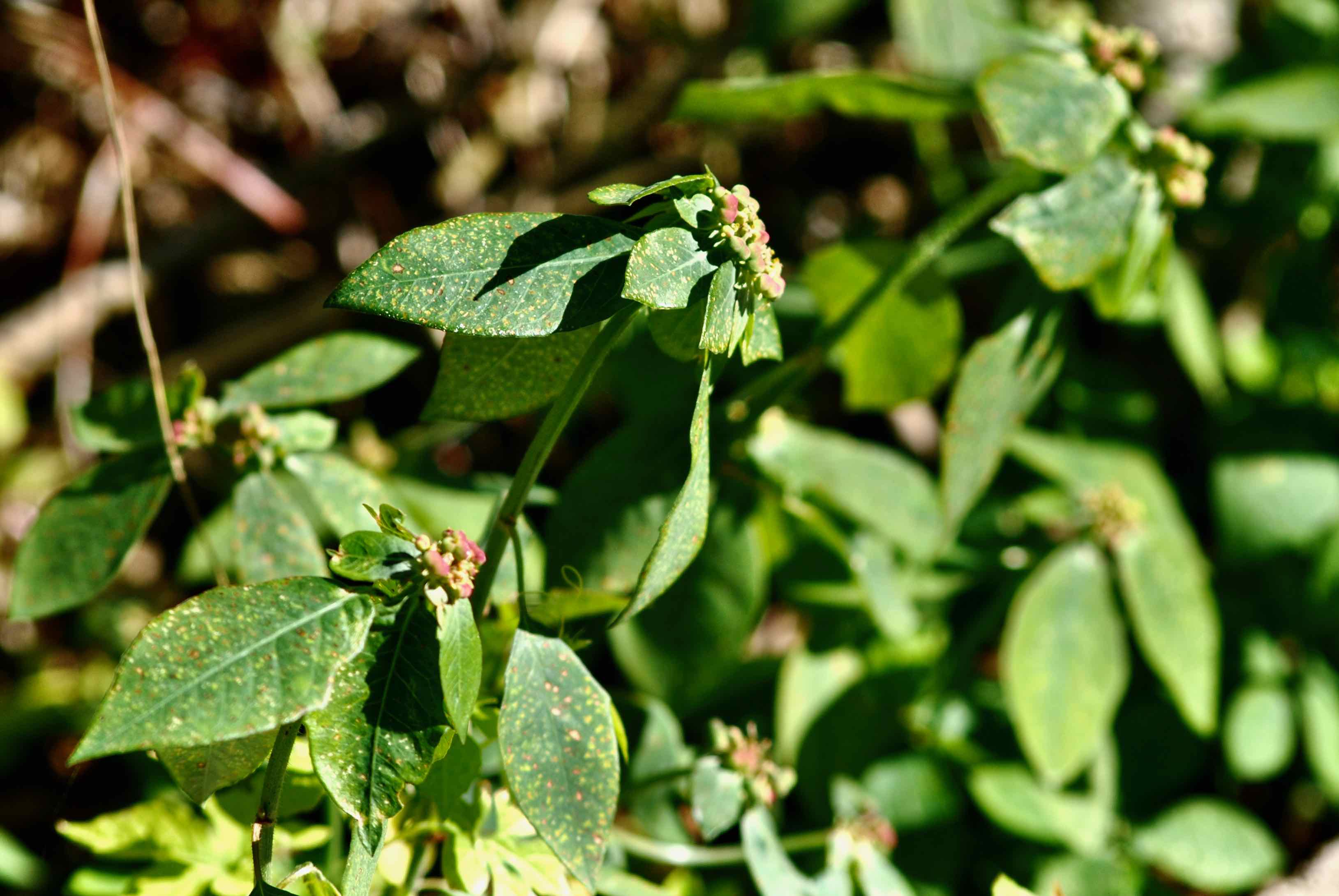
Fiddler's spurge, photographed at northwestern Delray Beach, Palm Beach County, in January 2014.
For farmers in tropical and subtropical parts of the world, this is one plant that's a particularly unwelcome sight. It's called fiddler's spurge, and it really is a scourge.
Scientifically, it's Euphorbia heterophylla, or Poinsettia heterophylla, depending on who you ask. And yes, it is related to the poinsettia used to brighten the holidays. It's also related to painted leaf, a Florida native with a much more benign reputation.
A quick word about spurges: it is a family of plants that has literally thousands of members around the globe. Most are "herbaceous," or non-woody, and have a milky sap or latex that is generally poisonous. Some are shrubs and trees, and are sources of tung oil, castor oil, rubber and tapioca.
Fiddler's spurge is native to the southern tier of the United States, from Florida to California, with Kentucky thrown in for good measure. Despite its native status, it's been declared a noxious weed in Florida; South Carolina classifies it as a plant pest. It's also native to the Caribbean, Mexico, Central America and South America. But to the regret of many, it's become naturalized in subtropical and tropical regions throughout the world and found on every continent save Antarctica.
According to the Food and Agriculture Organization of the United Nations, fiddler's spurge (referred to as lechosa) is a seriously problematic weed. It grows rapidly, blocks sunlight, robs crops of nutrients and water and reduces yields. Some lab studies showed fiddler's spurge to have some allelopathic properties. Allelopathy is a chemical way some plants use to block out competitors.
In Nigeria, it affects the production of cowpeas; in Sumatra, cocoa, tea and rice; in Israel, cotton. Even in Florida, where it is native, it hurts mango and citrus crops. Fiddler's spurge infestations can be severe enough to wipe out whole crops. And even if it doesn't, its sticky latex makes harvesting difficult.
It is rather spindly, growing a foot or so tall, with a hollow stem; break it and it will ooze latex (see the photo at the bottom right). It's thinly branched, with leaves, brachs and flowers clustered at the top. The leaves are shaped like violins, hence the name, but they can vary a great deal. In fact, naturalists, have given the plant at least five scientific names other than the two we've mentioned because of the variations. The fruit is lobed and explodes when ripe, scattering seeds as far a meter.
A single plant can produce as many as 4,500 seeds during a season, according to the UN. Fiddler's spurge can go from seedling to producing seeds in less than two months. Shade has no effect at all on fiddler's spurge. It just keeps on growing. If that isn't enough, it can poison grazing livestock.
But it does have some benefits. In African counties, it's used in traditional medicine to treat among other things gonorrhea, skin tumors, stomach aches and intestinal worms. It's used to increase milk production in breast-feeding women. Some studies have shown fiddler's spurge to have anitbiotic properties.
Other common names include Mexican fireplant, red milkweed, wild poinsettia, hypocrite poinsettia, Japanese poinsettia and summer poinsettia. It is a member of Euphorbiaceae, the spurge family.
Click on photo for larger image
U.S. Department of Agriculture Distribution Maps

Links for Fiddler's Spurge





